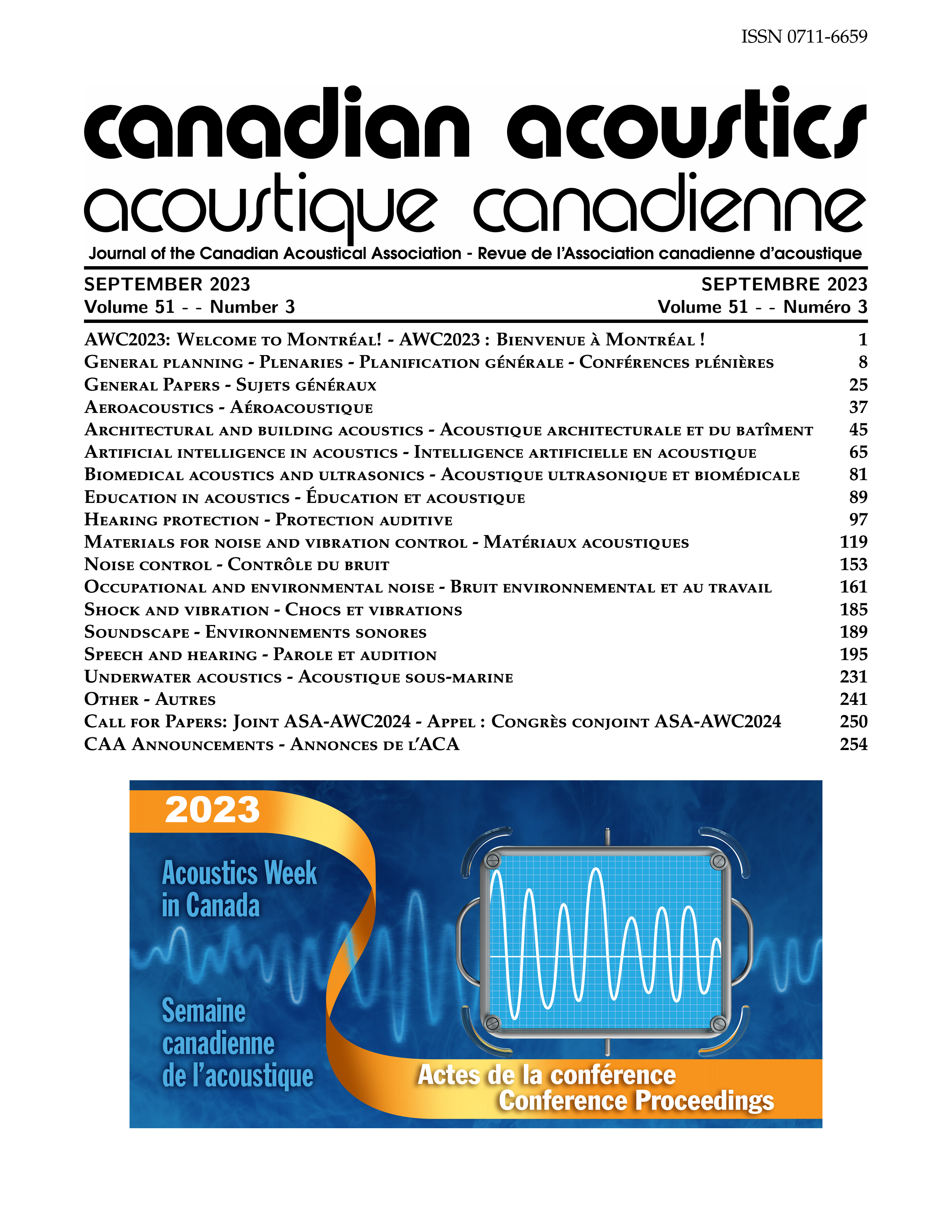Miniaturized Acoustic Concentrators for Local Generation of Ultrasonic Waves
Abstract
Ultrafast 3D ultrasound imaging is a rapidly growing research field that enables real-time imaging at a high frame rate and in a non-invasive manner. This technology finds applications in areas such as functional brain imaging, cardiac electrophysiology, and elastography. Currently, to achieve ultrafast 3D ultrasound, plane or diverging waves from virtual sources located behind the ultrasound probe are used. These virtual sources can be considered as focal points during emission, allowing for improved transmission of ultrasonic energy. However, they have limitations in terms of transmitted energy, complex electronics, and timing issues, which impact the quality of the resulting images. To address this, a study was conducted to design and experiment with new miniaturized ultrasound transmitters based on cylindrical waveguides with tapered sections. These transmitters, with a diameter of approximately 100 µm, can replace the virtual sources. A numerical study based on 2D axisymmetric Finite Element Modeling (FEM) was performed to model the transmission and reflection of longitudinal ultrasonic waves through a large-diameter cylindrical rod (D1) to another rod with a smaller variable diameter (D2). The results demonstrated that the transmission depends on the diameter ratio between the rods and the frequency used. Various longitudinal modes (L0, L1, L2, etc.) were identified, and their transmission was studied with respect to frequency and geometrical parameters. A preliminary experimental study was conducted on a cylindrical steel rod with a diameter of 6 mm and a piezoelectric disc. Measurements were performed using a Laser Doppler Vibrometer (LDV) to assess the wave-numbers and amplitudes of the longitudinal modes propagating in various sections of the rod, and to determine the reflected and transmitted energy corresponding to each incident mode. The frequencies analyzed ranged up to 3 MHz. The obtained results were then compared with theoretical predictions for further analysis. Future work includes the design of a concentrator for a specific imaging configuration.Additional Files
Published
How to Cite
Issue
Section
License
Author Licensing Addendum
This Licensing Addendum ("Addendum") is entered into between the undersigned Author(s) and Canadian Acoustics journal published by the Canadian Acoustical Association (hereinafter referred to as the "Publisher"). The Author(s) and the Publisher agree as follows:
-
Retained Rights: The Author(s) retain(s) the following rights:
- The right to reproduce, distribute, and publicly display the Work on the Author's personal website or the website of the Author's institution.
- The right to use the Work in the Author's teaching activities and presentations.
- The right to include the Work in a compilation for the Author's personal use, not for sale.
-
Grant of License: The Author(s) grant(s) to the Publisher a worldwide exclusive license to publish, reproduce, distribute, and display the Work in Canadian Acoustics and any other formats and media deemed appropriate by the Publisher.
-
Attribution: The Publisher agrees to include proper attribution to the Author(s) in all publications and reproductions of the Work.
-
No Conflict: This Addendum is intended to be in harmony with, and not in conflict with, the terms and conditions of the original agreement entered into between the Author(s) and the Publisher.
-
Copyright Clause: Copyright on articles is held by the Author(s). The corresponding Author has the right to grant on behalf of all Authors and does grant on behalf of all Authors, a worldwide exclusive license to the Publisher and its licensees in perpetuity, in all forms, formats, and media (whether known now or created in the future), including but not limited to the rights to publish, reproduce, distribute, display, store, translate, create adaptations, reprints, include within collections, and create summaries, extracts, and/or abstracts of the Contribution.


